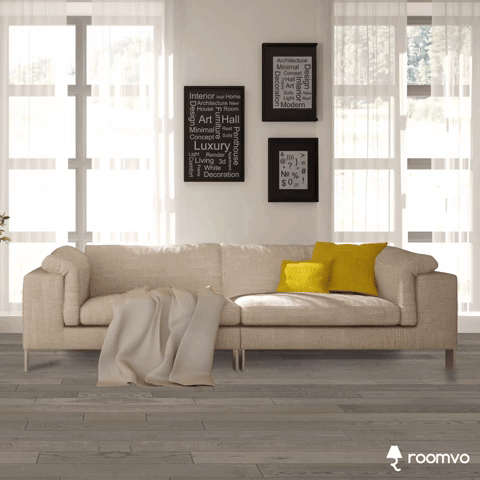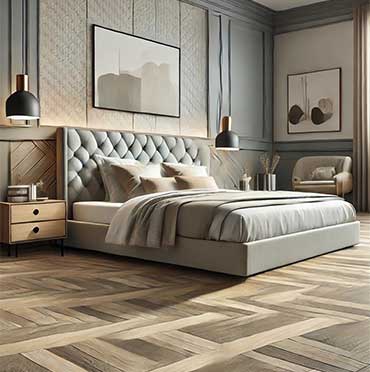Minimalist Interior Design Style: A Guide to Timeless Elegance
Introduction
Minimalist interior design is a style that embodies simplicity, functionality, and clarity. Originating from the mid-20th century modernist movement, it draws inspiration from Japanese design principles and Bauhaus ideals. Defined by clean lines, open spaces, and a focus on essential elements, minimalism strips away excess to create a serene and functional environment. Its appeal lies in its ability to offer a clutter-free, visually calming space that resonates with individuals seeking balance and intentionality in their homes.
Key Features of Minimalist Interior Design
Color Palette
The minimalist color palette is characterized by neutral tones and muted shades. White, beige, soft grays, and occasionally black are staples, often accompanied by subtle accents of natural wood or green from indoor plants. This restrained palette enhances the sense of openness and tranquility.
Materials and Textures
Minimalism emphasizes natural and authentic materials. Think smooth concrete, warm wood, sleek metal, and glass. To avoid sterility, textures play a key role—soft linen upholstery, a woven oak, or a monochromatic surface adds depth and interest without overwhelming the space.
Furniture Style
Minimalist furniture is functional and unadorned, often featuring straight lines or gentle curves. Pieces are chosen for their purpose, with multifunctional items like storage beds or modular sofas being especially popular. Materials like wood and metal dominate, while the overall aesthetic remains sleek and simple.
Patterns and Motifs
Patterns in minimalist design are rare and understated. When present, they are subtle and geometric, such as a single striped cushion or a monochromatic grid rug. The absence of elaborate patterns ensures the space remains cohesive and uncluttered.
Lighting
Lighting is a crucial aspect of minimalist interiors. Natural light is prioritized, with large windows often left uncovered or adorned with sheer curtains. Artificial lighting is equally important, with recessed lights, track lighting, or simple pendant lamps providing understated elegance. Warm white light is preferred to maintain a cozy atmosphere.
Flooring in Minimalist Interior Design
Flooring plays a pivotal role in minimalist interior design, acting as the foundation for the clean, cohesive aesthetic that defines this style. Minimalist flooring emphasizes simplicity, natural materials, and a seamless appearance, ensuring it complements rather than competes with other design elements. Here are some key considerations for minimalist flooring:
Minimalist interiors often favor natural, high-quality materials that showcase their inherent beauty. Popular flooring options include:
- Hardwood: Light or medium-toned Scandinavian, such as oak, ash, or maple, are ideal for their warm and organic appearance. Matte finishes or low-sheen options are preferred to maintain a subtle, understated look.
- Concrete: Polished or matte concrete floors provide a sleek, industrial edge that aligns with minimalist principles. Their neutral tone and smooth texture enhance the simplicity of the space.
- Tile: Large-format tiles in neutral tones like gray, beige, or off-white create a seamless and expansive feel. Stone tiles, such as Scandinavian or limestone, add a natural yet refined touch.
- Luxury Vinyl: For a budget-friendly alternative, luxury vinyl mimicking wood or stone can achieve a minimalist aesthetic without compromising on durability or style.
Minimalist flooring typically adheres to the overall neutral color scheme of the space. Light, muted tones such as soft whites, light grays, or pale vinyl help reflect natural light and create an open, airy atmosphere. Darker flooring can be used sparingly for contrast, provided it doesn’t overwhelm the space.
Continuity is crucial in minimalist design, so flooring should flow seamlessly between rooms without abrupt changes in material or pattern. This creates a harmonious, uninterrupted visual experience, making spaces feel larger and more cohesive.
While minimalist flooring emphasizes simplicity, incorporating subtle texture can add depth and interest. Wire-brushed wood, honed stone, or lightly textured concrete prevent the space from feeling too sterile and contribute to a more inviting ambiance.
Minimalist flooring choices often prioritize practicality, as clean lines and uncluttered surfaces require ease of maintenance. Smooth, durable options like abstract, polished concrete, and size are excellent for withstanding everyday use while maintaining their minimalist appeal.
The right flooring choice not only grounds the space but also complements the other key elements of minimalist design. It provides a backdrop for carefully selected furniture and decor, allowing the simplicity and intentionality of the style to shine. Whether opting for warm wood tones, sleek concrete, or minimalist tiles, flooring sets the stage for a serene and visually balanced environment.
Accessories and Decor
Accessories are kept to a minimum, with a focus on quality over quantity. A single piece of abstract art, a cushion vase, or a carefully chosen indoor plant might serve as the centerpiece of a room. Clutter is avoided, and decorative items often have a functional purpose.
Atmosphere and Appeal
Minimalist interior design creates an ambiance of calmness and clarity, making spaces feel open, airy, and inviting. This style resonates with individuals who value mindfulness, intentionality, and a clutter-free lifestyle. It’s especially appealing in today’s fast-paced world as it offers a retreat from sensory overload. The minimalist home embodies a "less is more" philosophy, promoting focus, relaxation, and mental clarity.
How to Incorporate Minimalist Design in Your Home
Suitable Rooms or Spaces
Minimalism works well in almost any room. Living rooms, bedrooms, and kitchens benefit particularly from its calming aesthetic. Even small spaces, like studio apartments, can feel expansive with minimalist principles.
Budget-Friendly Options
- Declutter First: Begin by eliminating unnecessary items to create a clean canvas.
- Opt for Quality Over Quantity: Invest in timeless furniture pieces rather than trendy items.
- DIY Projects: Refurbish old furniture with a sleek, neutral finish.
- Affordable Decor: Incorporate simple yet impactful decor like candles, throw pillows, or indoor plants.
Popular Combinations with Other Styles
- Scandinavian Minimalism: Blends the warmth of Nordic design with minimalist principles.
- Industrial Minimalism: Incorporates raw materials like concrete and exposed metal for a more edgy aesthetic.
- Japanese Zen: Adds traditional Japanese elements, such as tatami vinyl or sliding screens, for a tranquil touch.
Conclusion
Minimalist interior design is more than a style—it’s a lifestyle choice that celebrates simplicity, functionality, and peace. Whether you’re starting fresh or transitioning your existing space, the principles of minimalism offer endless opportunities to create a serene and harmonious home. Embrace the beauty of less and let your space reflect clarity and purpose.

roomvo
Visualize Flooring In Your !
Roomvo makes picking new floors easy. Take advantage of our room visualizer tool to see what your home will look like with any flooring products from our catalog. Just upload your photo to see your room come to life.
 Blog
BlogMinimalist Bedroom - Laminate Flooring Tiles
Minimalist Bedroom Flooring: Laminate Tile Benefits & Design Insights
tile offers a versatile and stylish solution for minimalist bedroom designs, seamlessly combining functionality and aesthetic appeal. In this blog post, Arabella Whitethorn delves into the unique features of laminate flooring tile, exploring its ability to mimic the natural elegance of wood or stone while offering durability and low-maintenance benefits. The post highlights how this flooring option complements minimalist design principles by providing a sleek, uncluttered foundation that enhances the bedroom's tranquil atmosphere. Arabella addresses key design considerations, including color schemes, texture, and room size perception, ensuring designers can create harmonious spaces tailored to their clients' needs.
Through a thoughtful analysis of its pros and cons, the post offers practical guidance on maximizing laminate flooring tile's potential in minimalist bedrooms. From enhancing comfort with area rugs to mitigating acoustic concerns with soundproof underlayment, the article provides actionable tips for interior designers and decorators. Whether prioritizing sustainability, budget, or style coherence, laminate flooring tile proves to be a smart and adaptable choice for crafting serene, timeless bedrooms that balance beauty with functionality.
Learn More